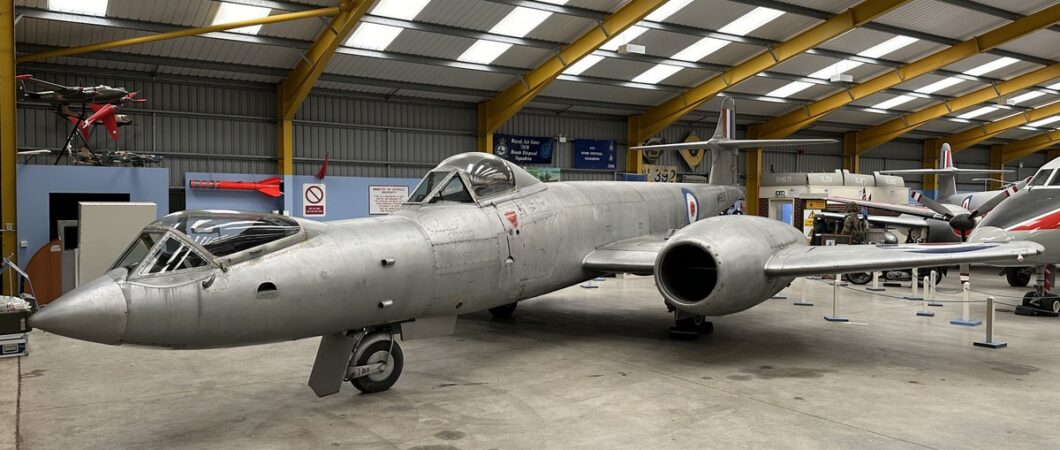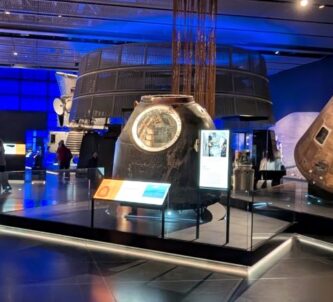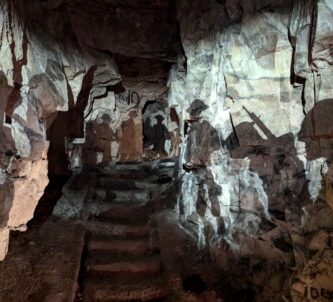You could say, the Newark Aviation Museum is having a bit of a lie down! The museum has just been loaned the extraordinary Gloster Meteor F8 Prone, which has been on display at the RAF Museum, Cosford* for many years.
The Meteor F8 Prone was built in 1952 for the RAF Institute of Aviation Medicine to test the advantages of a pilot lying prone instead of sitting up. The main advantage was thought to be the pilot’s ability to withstand G-forces, which cause blood to rush away from, or up to, the brain when sitting. It also offered the chance to have a slimmer aerodynamic profile for the cockpit. It turned out the advantages were easily outweighed by the problems. You only have to look at the diagram of the pilot lying on his/her stomach to see that! I can’t imagine they could stand it for more than 10 minutes! The reason for the second cockpit? It was never allowed to fly solo for safety reasons, but the back-up pilot did have some extra duties such as engine starting, re-lighting and fuel control.
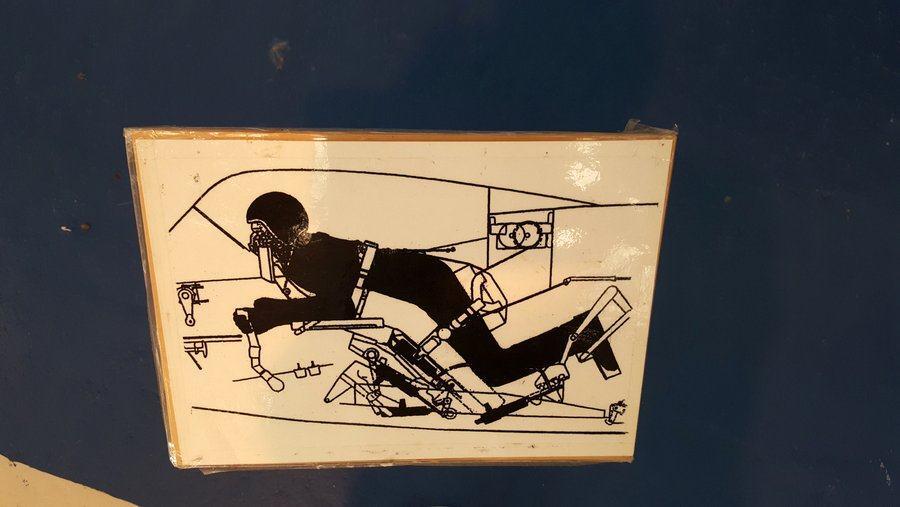
The loan agreement was finalised in June after months of negotiation. It’s a semi-permanent loan that will have its first review in eighteen months, but both parties are happy.
The RAF Museum’s Dr Harry Raffal says: “We are delighted that through our loan of the Meteor F8 to Newark Air Museum new audiences will engage with this unique strand of the RAF story. The loan will provide an exciting new exhibit at Newark Air Museum whilst helping the RAF Museum share our collection more widely.”
For the Newark Aviation Museum, it’s a chance to match up with another unique aircraft in their collection: the Reid and Sigrist RS4 Desford**.
“The museum first contemplated trying to take the Prone Meteor on loan, at the suggestion of aviation historian Ken Ellis, whilst developing the Interpretation Plan for the other British prone trials aircraft, the Reid and Sigrist Desford.” said Newark Air Museum Trustee, Colin Savill.
The RS3 Desford was a twin engine, twin rudder, prototype trainer aircraft built by a little-known aviation company, Reid and Sigrist, in their factory at Desford airfield, hence the name. It first flew in July 1946, just after VE Day and just before VJ Day.
In those days the RAF was awash with spare aircraft, so, having little use for a new trainer, it was allocated to the Institute of Aviation Medicine, who in 1951 converted it into a flying testbed for low-speed prone piloting. Designated the RS4 Bobsleigh with the RAF serial No. VZ728, the aircraft flew, just like the Meteor F8 Prone, with a test pilot lying prone in the glass nose, and a back-up pilot in the traditional cockpit behind.
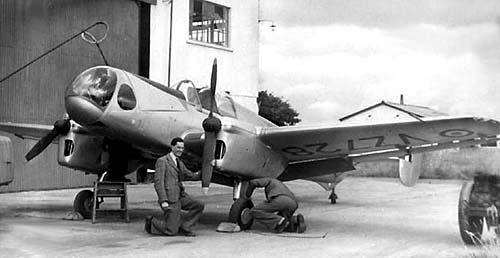
Just as with their Meteor, the Institute was disappointed with the results (still, it had to be tried didn’t it?) and the RS4 returned to civilian use as an aerial photography platform. It stopped flying in 1973, but then was restored to flying condition in 2018, and made its last flight to Newark Air Museum in Aug 2022.
So the RAF Institute of Aviation Medicine’s two experimental ‘prone’ aircraft are together again.
Oh, and if you want to have a bit of a lie down, I’m told the museum has a plan to recreate a prone ‘flight-bed’ so visitors can try it!
See Newark Air Museum and RAF Museum Midlands
* They’ve rebranded themselves now as RAF Museum Midlands and RAF Museum London, but I still think of them as Cosford & Hendon.
** Slightly confusing names: The RS3 Desford was converted by the RAF into the RS4 Bobsleigh, but when the prone pilot controls were stripped out, leaving the glass nose cockpit, and returned to civilian use, it became the RS4 ‘Desford‘ again, despite now being painted up as VZ728 in RAF colours.

